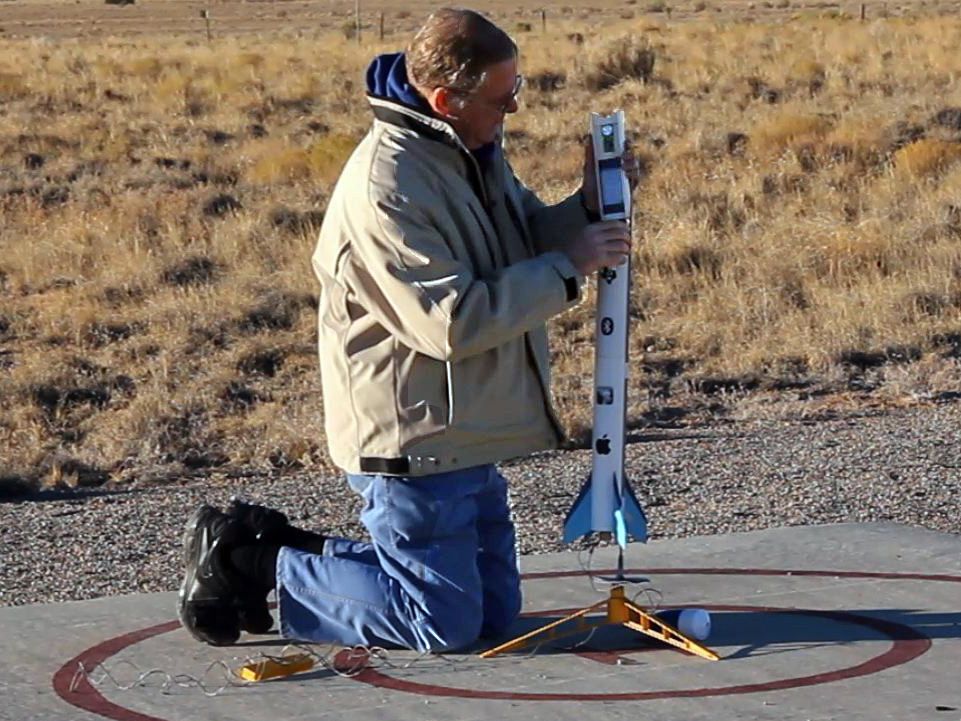It was a beautiful fall morning as I carefully packed the parachute, slid in the engine, and installed the igniter in my model rocket. I started the data collection program and slid the payload with a TI Bluetooth low energy SensorTag and an iPhone 4s into the payload bay.
Yes, an iPhone.
My wife’s iPhone.
Gulp.
Silently, I recited the astronaut’s prayer, “Dear Lord, please don’t let me screw up.” Then I pushed the launch button.
The rocket lifted off smoothly, arcing into the air. The parachute deployed. Landing broke off a fin, but pulling the payload out, I saw the iPhone was still working, still collecting acceleration, rotation and pressure!
We launched three more times that morning, once more with the same rocket after a quick field repair, and twice with another rocket that carries the SensorTag without an iPhone, transmitting the data using Bluetooth low energy to an iPhone held safely on the ground. This blog shows how it’s done. You’ll get plans to build the rockets, programs to collect and analyze data, and even links to the data from our four rocket flights.


